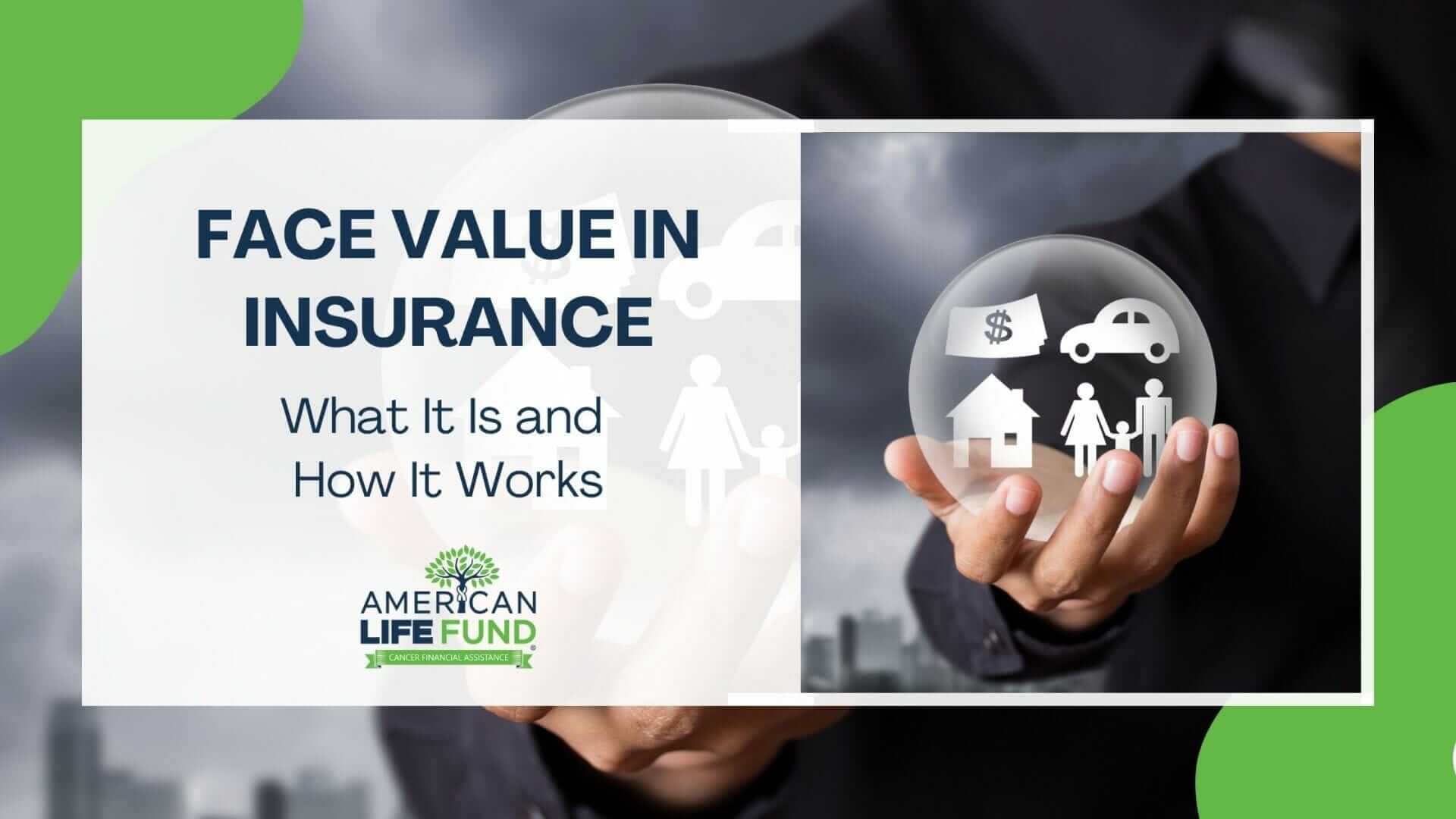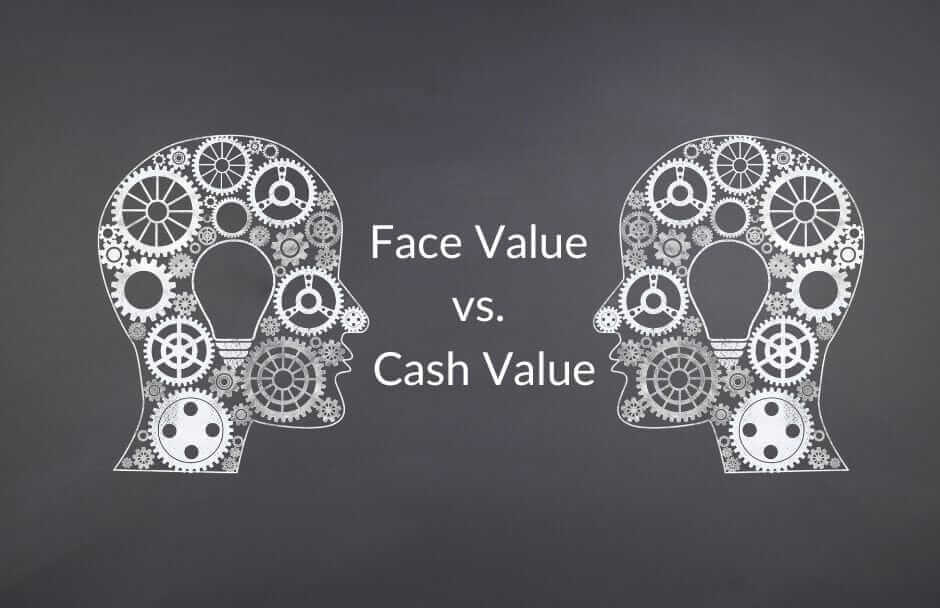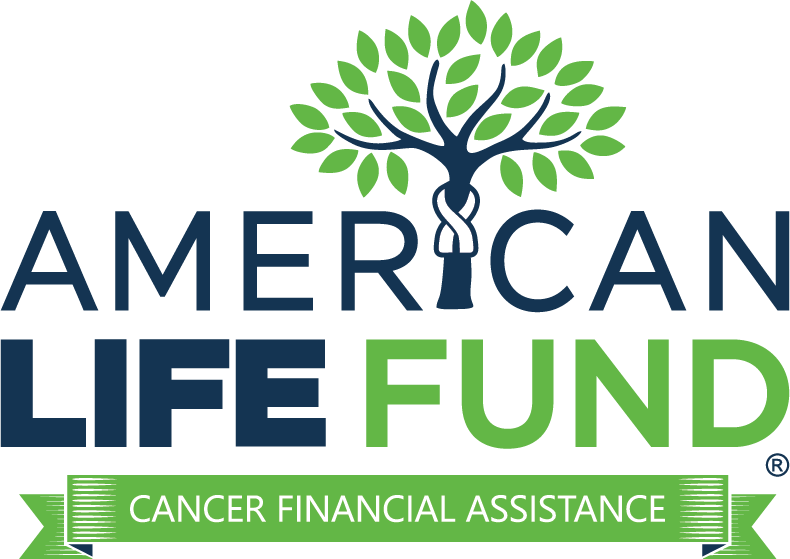The face value of your life insurance policy is very important. This amount helps cover major expenses like mortgages and college fees. Choosing the right face value ensures your family’s financial security while keeping premiums affordable. Regularly updating your policy keeps it aligned with your current needs. Understanding and selecting the right face value provides peace of mind, knowing your loved ones will be supported when they need it most. Make an informed decision to protect your family’s future.

What is The Face Value For Life Insurance?
Life insurance is a cornerstone of financial planning, offering a safety net for those affected by the unfortunate loss of a loved one. At the heart of a life insurance policy lies its “face value,” representing the original amount of insurance purchased and signifying its overall worth.
More commonly known as the death benefit, the value is the money paid to the designated beneficiaries upon the policyholder’s passing.
This critical amount serves as a lifeline, especially during challenging times when the loss of a parent or breadwinner could result in a significant income deficit, making it difficult to meet essential financial obligations like college expenses or mortgage payments. By providing the necessary financial support, the face amount ensures the family can navigate these trying circumstances more easily.
The face amount also extends its impact beyond just posthumous needs. It can be utilized to create a trust, contribute to charitable causes, or serve as an inheritance, even during the policyholder’s lifetime. However, it’s crucial to be aware that the total cash value is subject to change over time. The coverage amount can increase with the potential for growth through paid-up additional insurance, where dividends are invested back into the policy.
Conversely, cash withdrawals may reduce the death benefit, potentially falling below the initial life insurance policy’s face. Understanding these dynamics empowers policyholders to make informed decisions about their life insurance coverage, ensuring that the coverage amount aligns with their evolving financial needs.

What is Face Value vs. Cash Value?
Within a life insurance plan, face value and cash value concepts serve distinct roles and functions, each contributing to the policy’s overall benefits. The cash value operates as a savings account within the life insurance policy, offering the potential to borrow funds through a loan against its accrued value.
One of the key advantages of the cash value account is that it grows steadily and enjoys tax-deferred status, making it an attractive asset for policyholders seeking a source of accumulated funds over time.
However, it’s essential to note that not all life insurance plans offer access to cash value. Despite this, other benefits in the policy can still provide crucial financial support for beneficiaries, including dependents like children and spouses.
On the other hand, the policy’s life insurance face value represents the total amount payable to the designated beneficiaries upon the policyholder’s death. It encompasses the death benefit and may also include the value of any additional riders or optional benefits the policyholder has chosen to include.
If no supplementary benefits are selected, the value will be equivalent to the death benefit amount alone. Understanding the distinction between face value and cash value empowers individuals to make informed decisions when structuring their life insurance coverage to best suit their financial objectives and protection needs.

Is The Face Value The Same as The Death Benefit?
The face value and the death benefit in a life insurance policy are interconnected, yet they are not necessarily the same. At the outset, the face value signifies the initial death benefit amount the policyholder has chosen when purchasing the policy.
However, over time, changes in the policy’s cash value can impact the total death benefit. Depending on the performance of the policy and its cash value accumulation, the total death benefit may undergo alterations, causing it to either increase or decrease relative to the initial value. In certain situations, the death benefit can rise beyond the face value, providing enhanced financial protection to beneficiaries.
Conversely, fluctuations in the cash value can reduce the death benefit, potentially falling below the policy’s original value. Understanding this distinction is crucial as it highlights the dynamic nature of life insurance and how the policy’s performance can influence the ultimate benefit received by beneficiaries.
Policymakers must regularly review and assess their coverage to ensure it aligns with their changing financial needs and goals, enabling them to make necessary adjustments to optimize their life insurance protection.

How Do I Determine The Face Value of a Life Insurance Policy?
Determining the face value of a life insurance policy involves several crucial steps, enabling policyholders to gain a clear understanding of the coverage they have secured. The first step is to review the benefits schedule the life insurance company provides.
In this schedule, you will find the death benefit, which represents the core value of the policy. The benefits schedule may include details of any additional riders added to the plan. Riders are extra benefits that policyholders can include to enhance coverage based on their specific needs.
It’s important to note that certain riders may substantially impact the face value. For instance, some riders have the potential to double the value if the insured passes away due to a specific type of accident, providing an added layer of financial protection.
While the face value typically remains constant, it may be subject to change if the policy allows for alterations during its lifetime. However, these changes would be specified in the policy’s terms and conditions. Moreover, the death benefit can be affected if the cash value is depleted, potentially leading to a reduction below the original face value.
As you navigate the process of determining the face value of your life insurance policy, it is essential to carefully assess the benefits schedule and consult with your insurance provider to ensure that your coverage aligns with your evolving financial needs and objectives. Regular reviews of your policy can help you make informed decisions to optimize your life insurance coverage and provide the best possible financial protection for your loved ones.

What Should The Face Value of My Life Insurance Policy Be?
Selecting the appropriate face value for your life insurance policy is a critical decision that requires careful consideration to ensure adequate financial protection for your family’s future. As a general rule of thumb, a common recommendation is to opt for a value of approximately 10 to 15 times your annual income. This estimation considers the family’s financial support they may need during your untimely passing.
In addition to covering your income replacement needs, it is essential to consider an extra cushion to account for unexpected expenses, such as unforeseen medical bills or emergencies. To determine the ideal face value for your policy, it is crucial to assess and consider several key factors.
First and foremost, calculate the total amount required to pay off any debts, such as a mortgage or other loans. Next, factor in the cost of raising your dependents, providing for their essential needs and education expenses, including college tuition.
Furthermore, ensure that the face value is sufficient to cover your family’s everyday bills and living expenses, so that they can maintain their standard of living. Another critical consideration is addressing final medical bills and the costs associated with your funeral arrangements to alleviate financial burdens on your loved ones during a challenging time.
By carefully evaluating these factors and personalizing the face value amount to align with your unique financial circumstances and family’s needs, you can be confident that your life insurance policy will serve as a reliable and comprehensive financial safety net, providing your loved ones with the support they need in the face of unexpected life events. Regularly reviewing and adjusting your policy as circumstances change ensures that the face value amount remains aligned with your evolving financial situation and long-term goals.

How Does Face Value Influence Premium Cost?
The face value of a life insurance policy plays a crucial role in determining the cost of the coverage. Insurance providers assess the financial risk level by considering the face amount. Consequently, the premium amount is influenced accordingly.
Permanent life insurance policies, which include both a cash value and a face value component, tend to have higher premiums than term life insurance policies that only carry a face value. Term policies are generally less expensive upfront because they provide coverage for a specific period without building cash value.
When opting for life insurance coverage, it’s essential to recognize that higher face values correspond to higher premiums. For instance, a term life insurance policy with a $500,000 face amount would cost more than one with a $100,000 face. The higher the face amount, the more financial protection the policy provides, increasing the insurer’s potential liability and, therefore, the premium amount.
Balancing the face value and premium cost is vital when selecting a life insurance policy. Policyholders should assess their current and future financial needs, considering factors such as outstanding debts, living expenses, education costs, and other financial obligations. Evaluating the value in relation to these factors can help individuals make an informed decision about the coverage required to protect their loved ones and maintain financial stability adequately.
Ultimately, understanding the interplay between face value and premium cost empowers policyholders to select a life insurance policy that best suits their unique financial situation and long-term goals, providing the necessary protection and peace of mind for themselves and their families.
What Can Cause Face Value to Change?
The face value of a life insurance policy is subject to fluctuations due to various events and actions taken by the policyholder. These changes can either increase or decrease the face amount, affecting the policy’s overall coverage.
Positive changes in the value can occur when the policy’s cash value grows significantly. The cash value may increase due to dividends credited to the policy, which add to the total cash value over time. Policy owners can also boost the death benefit by purchasing additional insurance within the same policy or making additional cash contributions.
The cash value often called the net surrender value, represents the amount the policyholder receives if the policy is surrendered early, forfeiting the death benefit for an upfront cash payment. This value is typically reflected in the policy’s monthly statements from the insurer.
Negative changes to the face amount can arise from various scenarios. For instance, if the policyholder has taken out policy loans and fails to repay them, the outstanding loans will be deducted from the policy’s face value. Additionally, suppose premium payments are not made on time. In that case, the insurance company may use the policy’s cash value to cover these unpaid premiums, which can reduce both the cash value and the death benefit.
Additionally, making withdrawals or “surrenders” from the policy can also diminish the death benefit, as these actions reduce the total cash value available within the policy.
Understanding the factors that can cause changes to the value of a life insurance policy empowers policyholders to make informed decisions about managing their coverage effectively.

Is The Face Value of Life Insurance an Asset?
The face value of a life insurance policy is generally not considered an asset as it represents the amount the policy will pay the beneficiaries upon the insured’s death. Only when that event occurs will the face value hold intrinsic value as an asset since it hasn’t been realized or received by anyone.
However, certain life insurance policies include a cash value component that can be classified as an asset. In these policies, a portion of the premium payments goes into a cash value account that grows over time on a tax-deferred basis. The policyholder can access this cash value through policy loans or withdrawals during their lifetime, providing a form of savings or investment element.
So, while the face value of a life insurance policy itself may not be an asset, the cash value in certain types of life insurance policies can indeed be considered one since it has tangible value and you can cash out life insurance before death.
It’s important to note that the cash value will vary depending on the type of policy and how long it’s been in force, and accessing it may have implications on the death benefit and policy performance.
Additionally, viatical settlements are an option for terminally or chronically ill policyholders. Like a life settlement, the policy is sold at a price higher than the cash surrender value but lower than the death benefit.
It’s important to consider that life insurance policies can have potential implications for estate planning and taxes. Therefore, consulting a financial advisor or insurance professional is advisable to fully understand the impact of a life insurance policy on overall financial planning and assets.





